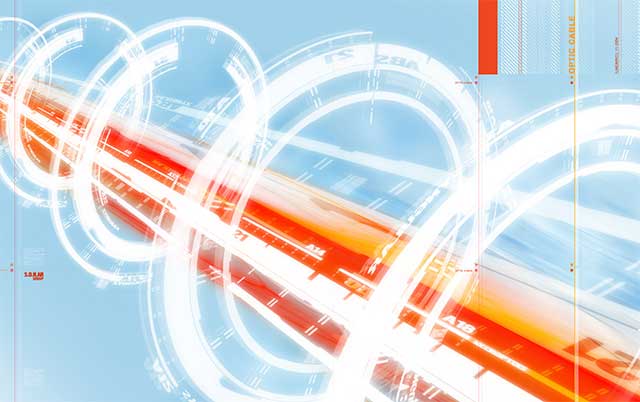Fibre optics have helped to revolutionise the communications industry over the past few decades. While using a fibre optic network can have its disadvantages, there are many benefits to using fibre optics compared to cable-based networks. To help you decide whether fibre optics or cable is best for you, let’s take a look at the pros and cons of each.
Dimensions
Fibre optic cable is thinner than copper wire cable. This allows more fibre optic cables to be bundled together, which allows for a higher carrying capacity than the equivalent diameter of copper wire cabling. Fibre optic cable also weighs less than the comparable copper cable.
Flexibility
Fibre optic cable is more flexible than copper cable. In the case of communications networks, this can make it easier to lay, especially over long distances. This flexibility also allows fibre optics to have many other uses outwith the communications industry, for use in medical imaging, mechanical imaging and plumbing.
Efficiency
Fibre optics work by using light to transmit digital data. Light signals degrade less, which means less power is required for fibre optics. Where copper wire requires high voltage transmitters, fibre optics require much lower power transmitters.
Cost
Costs vary according to the distance of the cabling and other factors. However, over long distances, fibre optic cabling can often be the most cost-effective choice. As copper cabling depends on electricity to transmit signals, it can be more expensive. Fibre optics transmitting only light can be cheaper to operate.
Safety
Again, due to the fact fibre optics transmit light, there is no fire hazard, unlike with copper wire which transmits electricity. This means there is no danger of sparking or electrocution for those handling fibre optics, and because fibre optics are made with glass and do not conduct electricity, there is no need to ground them. They are immune to any type of electrical interference, even lightning.
Security
The data transmitted via fibre optics is much harder to tap than data transmitted on copper wire, which it makes it a much more secure choice.
Quality
A fibre optic network delivers better quality for its users. Copper wire cabling experiences higher signal loss than fibre optics. Carrying electricity also means each copper wire cable can interfere with its neighbouring cables. Carrying light, fibre optic cables do not experience this interference.
Corrosion
Copper wire is sensitive to water and chemicals, and proximity to either can lead to corrosion of the wiring. Fibre optics are less sensitive, meaning they can endure much more and the cabling can be laid out in more places.
Upgrades
Unlike copper wire cabling, fibre optic cabling is not as susceptible to heat damage and degrading cables. This means fibre optics generally need fewer upgrades and maintenance.
What does this mean for consumers?
If a telecommunications provider uses a fibre optic network, there are a number of benefits to the consumer using that service. For consumers using digital phone and TV services, and broadband data plans, using a fibre optic network can mean those services are cheaper, better quality and more efficient.
